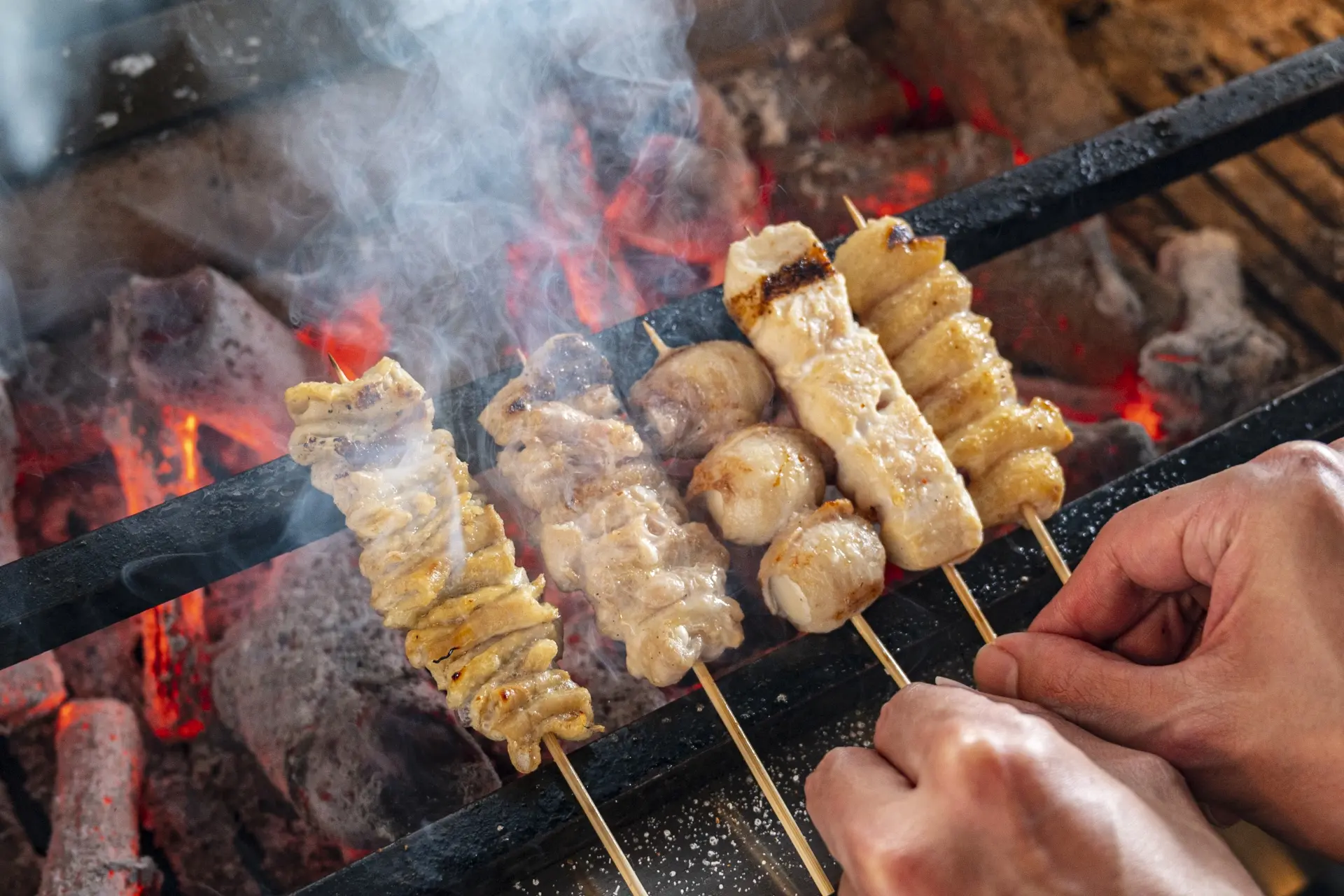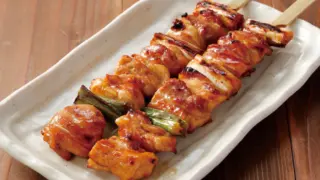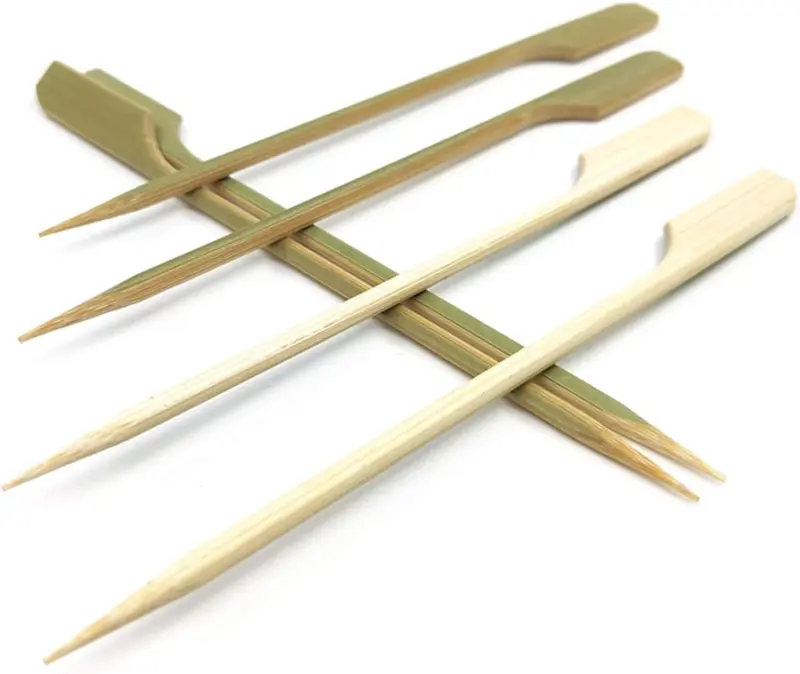Yakitori is a popular Japanese dish made with bite-sized pieces of chicken grilled on skewers. In Yakitori Japan, people of all ages enjoy this flavorful dish.
Chefs grill yakitori to perfection over a charcoal flame, making it a must-try for anyone visiting Japan.
This guide explores the world of yakitori, highlights the different types, and shares where to find the best yakitori spots in Tokyo.
What is Yakitori?
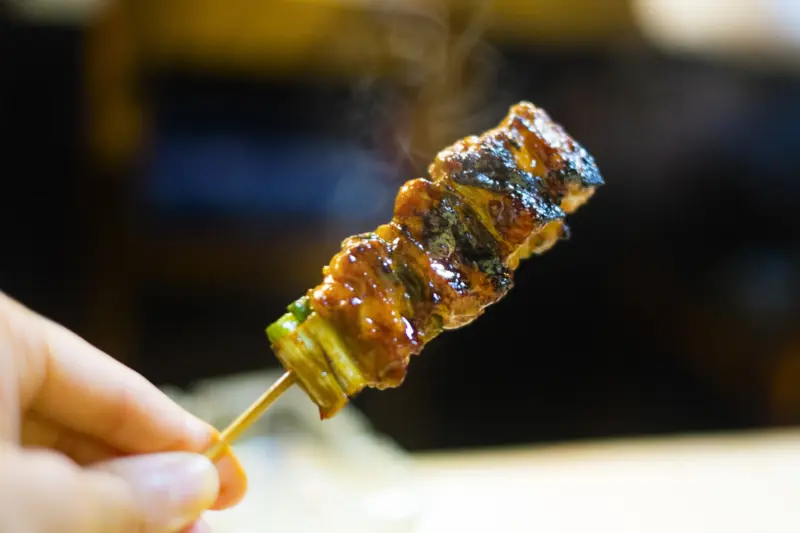
Yakitori means “grilled chicken” in Japanese.
This versatile dish is popular at izakayas (Japanese pubs), specialty restaurants, and food stalls during festivals. Each skewer highlights specific parts of the chicken, seasoned with either shio (salt) for a lighter flavor or tare (a sweet soy-based sauce) for a richer taste.
Chefs often prepare skewers using various chicken parts, such as thighs, wings, and hearts, while also including unique options like chicken skin or cartilage.
Some restaurants even offer creative variations, such as skewers with cheese, quail eggs, or vegetables wrapped in chicken.

Traditionally, yakitori is cooked over binchotan charcoal, which enhances the flavors with a distinct smokiness.
Pair it with drinks like beer, sake, or shochu to enjoy the authentic yakitori experience.
Types of Yakitori
1. Negima
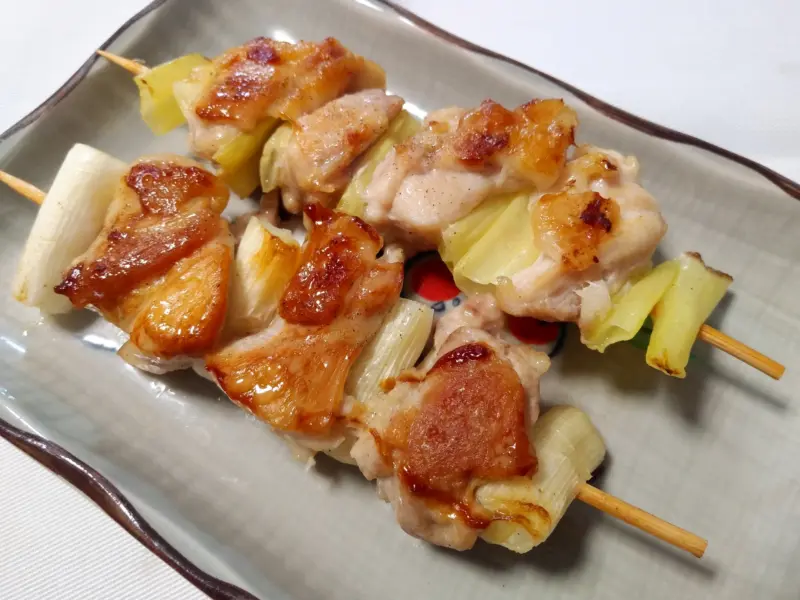
One of the most common types, negima combines juicy chicken thigh pieces with green onion.
The mix of savory chicken and refreshing onion makes it a classic favorite.
2. Tsukune (Chicken Meatballs)
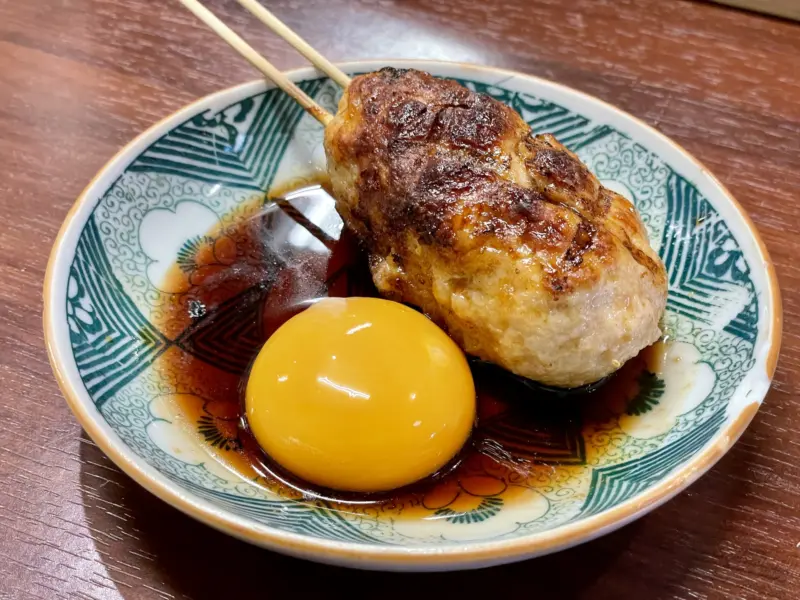
Tsukune is made from seasoned ground chicken, sometimes mixed with vegetables or egg.
It’s often served with tare sauce and sometimes a raw egg yolk for dipping.
3. Momo (Chicken Thigh)
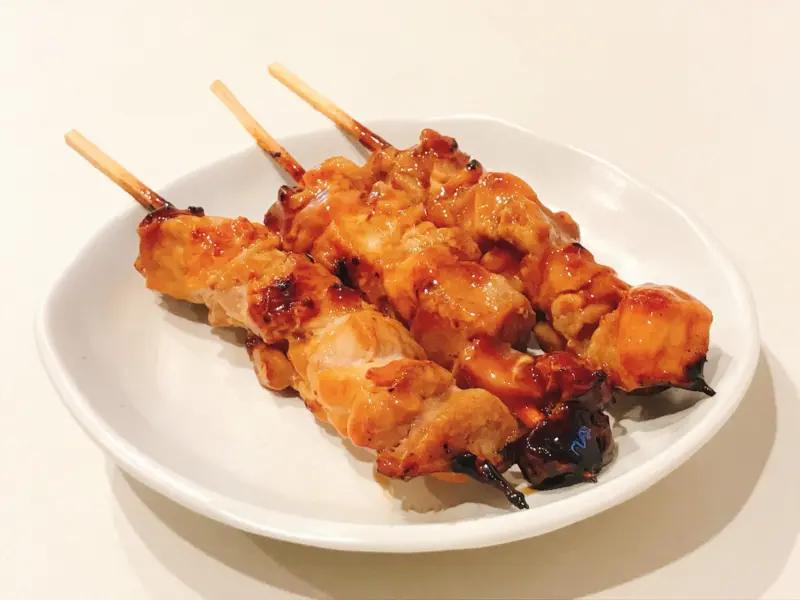
Momo is made from tender chicken thigh meat and is perfect for those who love juicy, flavorful bites.
4. Kawa (Chicken Skin)
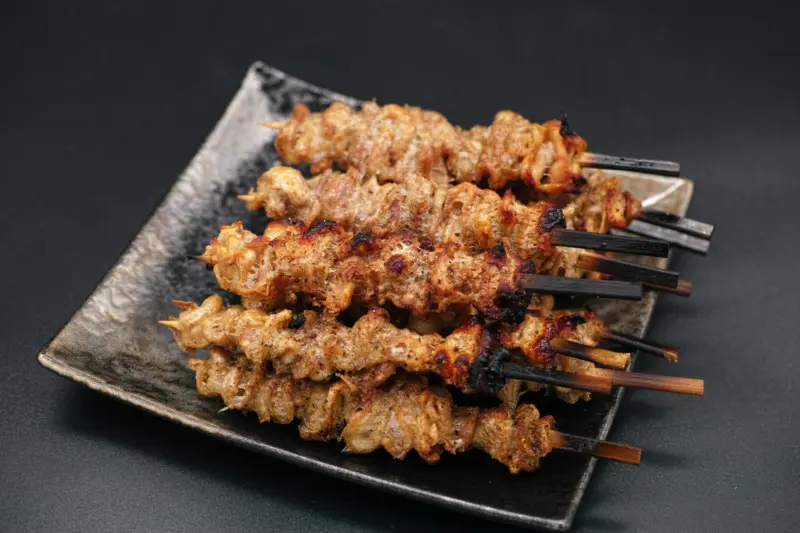
Crispy and rich in flavor, kawa is grilled chicken skin that’s crunchy on the outside and slightly chewy on the inside.
5. Reba (Chicken Liver)
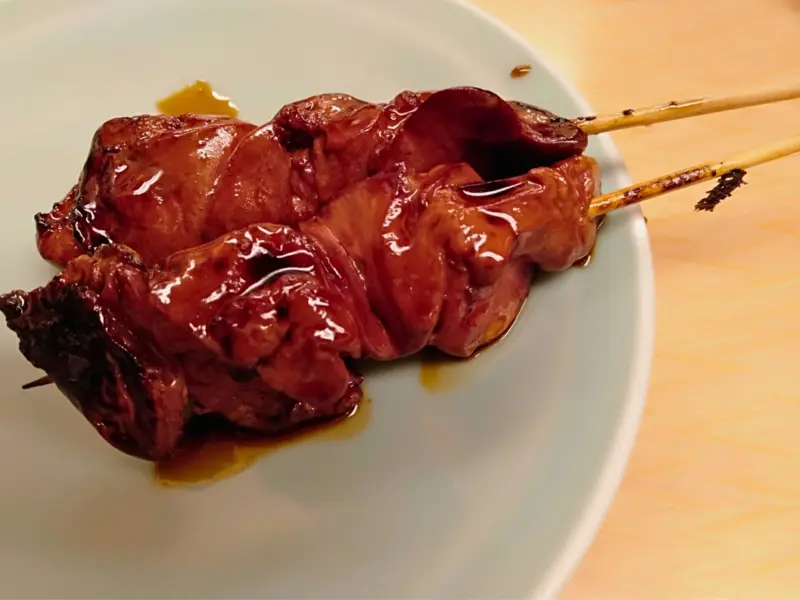
For adventurous eaters, reba offers a creamy, rich taste. It’s often seasoned with tare to balance the strong flavor.
How to Enjoy Yakitori
Order by the Skewer:
Most yakitori places allow you to order individual skewers, so you can sample a variety of flavors and find your favorites.
Pair with Drinks:
Yakitori pairs perfectly with beer, sake, or shochu. In fact, pairing these drinks with yakitori is a beloved tradition in Japan, making it a complete culinary experience.
Use the Seasoning Wisely:
Many restaurants offer extra seasonings, such as shichimi pepper or wasabi. For this reason, take advantage of these condiments to enhance the flavors and make your meal more enjoyable.
Yakitori Etiquette
- Eat Fresh Off the Grill: Yakitori is best enjoyed hot and fresh, so don’t wait too long after it’s served.
- Use the Skewer Rest: Many restaurants provide a small dish to place your used skewers.
- Don’t Be Shy to Ask: If you’re unsure about the menu, the staff will often help with recommendations.
Top Restaurants in Tokyo
1. Torishiki (Meguro)
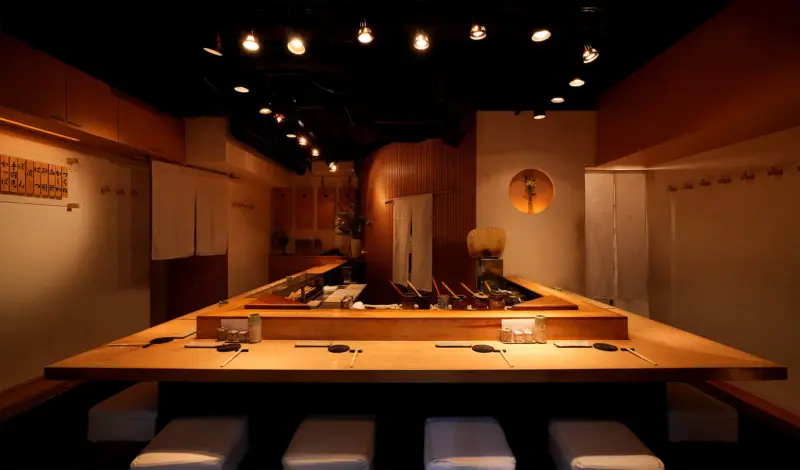
Torishiki is a high-end yakitori spot that features masterful grilling techniques and carefully selected ingredients. You must make reservations to secure a spot.
Official Site: Torishiki
2. Birdland (Ginza)

Birdland, a Michelin-starred restaurant, elevates yakitori with creative pairings and a refined dining atmosphere
Official Site: Birdland (Ginza)
3. Tori Tama (Ebisu)
Tori Tama specializes in using every part of the chicken, making it perfect for those who want to explore the full spectrum of yakitori.
Official Site: Tori Tama (Ebisu)
4. Torikizoku: Japan’s Most Popular Yakitori Chain
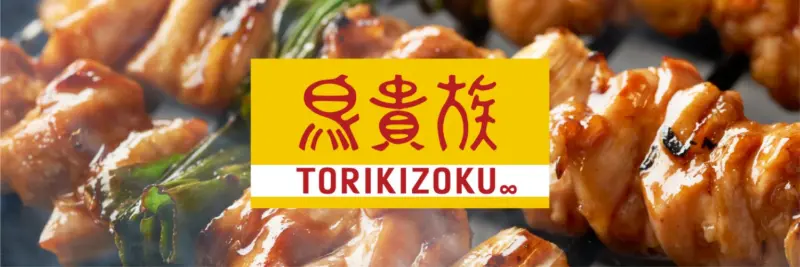
Torikizoku, a beloved yakitori chain with locations all over Japan, stands out for its affordable prices and consistent quality.
Additionally, whether you’re a solo traveler or with friends, Torikizoku creates a welcoming and casual dining experience.
As a result, it’s the perfect choice for first-time visitors who want to enjoy yakitori in a relaxed setting.
FAQ
It varies. Casual yakitori spots charge 150-300 JPY per skewer, while high-end places may cost 500 JPY or more.
Yes, many yakitori restaurants serve non-chicken options, including pork, vegetables, or tofu skewers.
Some restaurants include vegetable skewers such as shiitake mushrooms, green peppers, or asparagus on their menu.
Yakitori is more than just food—it offers an experience that highlights the skill and flavor of Japanese cuisine. Whether you enjoy skewers at a casual food stall or dine at a Michelin-starred restaurant, yakitori belongs on your must-try list when visiting Tokyo.
Ready to explore more Japanese food? Discover our guide to Omoide Yokocho for a retro dining experience in Shinjuku!

